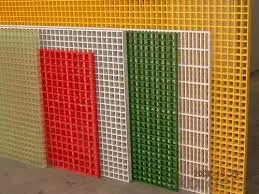
-
 Afrikaans
Afrikaans -
 Albanian
Albanian -
 Amharic
Amharic -
 Arabic
Arabic -
 Armenian
Armenian -
 Azerbaijani
Azerbaijani -
 Basque
Basque -
 Belarusian
Belarusian -
 Bengali
Bengali -
 Bosnian
Bosnian -
 Bulgarian
Bulgarian -
 Catalan
Catalan -
 Cebuano
Cebuano -
 China
China -
 China (Taiwan)
China (Taiwan) -
 Corsican
Corsican -
 Croatian
Croatian -
 Czech
Czech -
 Danish
Danish -
 Dutch
Dutch -
 English
English -
 Esperanto
Esperanto -
 Estonian
Estonian -
 Finnish
Finnish -
 French
French -
 Frisian
Frisian -
 Galician
Galician -
 Georgian
Georgian -
 German
German -
 Greek
Greek -
 Gujarati
Gujarati -
 Haitian Creole
Haitian Creole -
 hausa
hausa -
 hawaiian
hawaiian -
 Hebrew
Hebrew -
 Hindi
Hindi -
 Miao
Miao -
 Hungarian
Hungarian -
 Icelandic
Icelandic -
 igbo
igbo -
 Indonesian
Indonesian -
 irish
irish -
 Italian
Italian -
 Japanese
Japanese -
 Javanese
Javanese -
 Kannada
Kannada -
 kazakh
kazakh -
 Khmer
Khmer -
 Rwandese
Rwandese -
 Korean
Korean -
 Kurdish
Kurdish -
 Kyrgyz
Kyrgyz -
 Lao
Lao -
 Latin
Latin -
 Latvian
Latvian -
 Lithuanian
Lithuanian -
 Luxembourgish
Luxembourgish -
 Macedonian
Macedonian -
 Malgashi
Malgashi -
 Malay
Malay -
 Malayalam
Malayalam -
 Maltese
Maltese -
 Maori
Maori -
 Marathi
Marathi -
 Mongolian
Mongolian -
 Myanmar
Myanmar -
 Nepali
Nepali -
 Norwegian
Norwegian -
 Norwegian
Norwegian -
 Occitan
Occitan -
 Pashto
Pashto -
 Persian
Persian -
 Polish
Polish -
 Portuguese
Portuguese -
 Punjabi
Punjabi -
 Romanian
Romanian -
 Russian
Russian -
 Samoan
Samoan -
 Scottish Gaelic
Scottish Gaelic -
 Serbian
Serbian -
 Sesotho
Sesotho -
 Shona
Shona -
 Sindhi
Sindhi -
 Sinhala
Sinhala -
 Slovak
Slovak -
 Slovenian
Slovenian -
 Somali
Somali -
 Spanish
Spanish -
 Sundanese
Sundanese -
 Swahili
Swahili -
 Swedish
Swedish -
 Tagalog
Tagalog -
 Tajik
Tajik -
 Tamil
Tamil -
 Tatar
Tatar -
 Telugu
Telugu -
 Thai
Thai -
 Turkish
Turkish -
 Turkmen
Turkmen -
 Ukrainian
Ukrainian -
 Urdu
Urdu -
 Uighur
Uighur -
 Uzbek
Uzbek -
 Vietnamese
Vietnamese -
 Welsh
Welsh -
 Bantu
Bantu -
 Yiddish
Yiddish -
 Yoruba
Yoruba -
 Zulu
Zulu
rectangular tank with dimensions for grp calculation.
Understanding Rectangular Tanks for GRP Calculation
When it comes to designing and calculating the necessary specifications for rectangular tanks, particularly in the context of Glass Reinforced Plastic (GRP) construction, several critical dimensions and factors must be considered. GRP tanks are widely used due to their durability, resistance to corrosion, and lightweight properties, making them an attractive option for various applications ranging from industrial storage to water treatment facilities.
To begin the process, it's essential to define the specific dimensions of the rectangular tank. Typically, these dimensions include length, width, and height. Each of these parameters plays a significant role in determining the tank's volume, which is crucial for calculating the amount of material required for construction and the overall structural stability of the tank.
The volume of a rectangular tank can be calculated using the formula
\[ \text{Volume} = \text{Length} \times \text{Width} \times \text{Height} \]
rectangular tank with dimensions for grp calculation.

This fundamental calculation allows engineers to ensure that the tank meets the required capacity for its intended use. For instance, if the tank is designed to store chemicals or wastewater, the volume calculation must take into account local regulations regarding capacity limits and potential overflow scenarios.
In terms of GRP calculation, understanding the tank's dimensions helps in assessing the material specifications. GRP offers excellent tensile strength and is much lighter than traditional materials like steel or concrete. However, the thickness of the GRP layers needs to be adequate to withstand internal pressures, particularly if the tank will hold liquids with varying densities or if it will be subjected to external environmental factors, such as wind or seismic activity.
Moreover, proper consideration of the tank’s base is necessary as it must be designed to support the weight of the filled tank while preventing any deformation or cracking. The foundation should be level and reinforced according to the weight calculations derived from the tank’s dimensions and the intended contents.
Lastly, proper maintenance and inspections are crucial for the longevity of GRP tanks. Regular checks for leaks, structural integrity, and corrosion should be scheduled to ensure optimal performance throughout the tank's lifespan.
In conclusion, the dimensions of a rectangular tank are fundamental not only to the design and GRP calculations but also to its functional performance and safety. By understanding these key aspects, engineers and designers can create efficient systems that fulfill operational needs while adhering to safety and regulatory standards.









